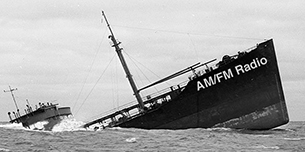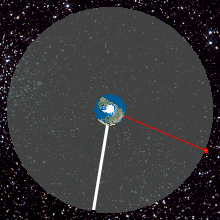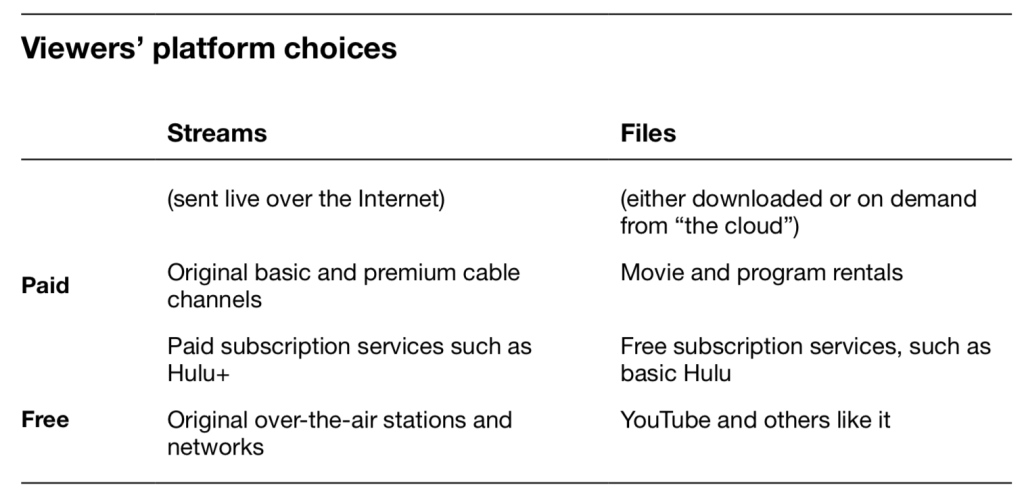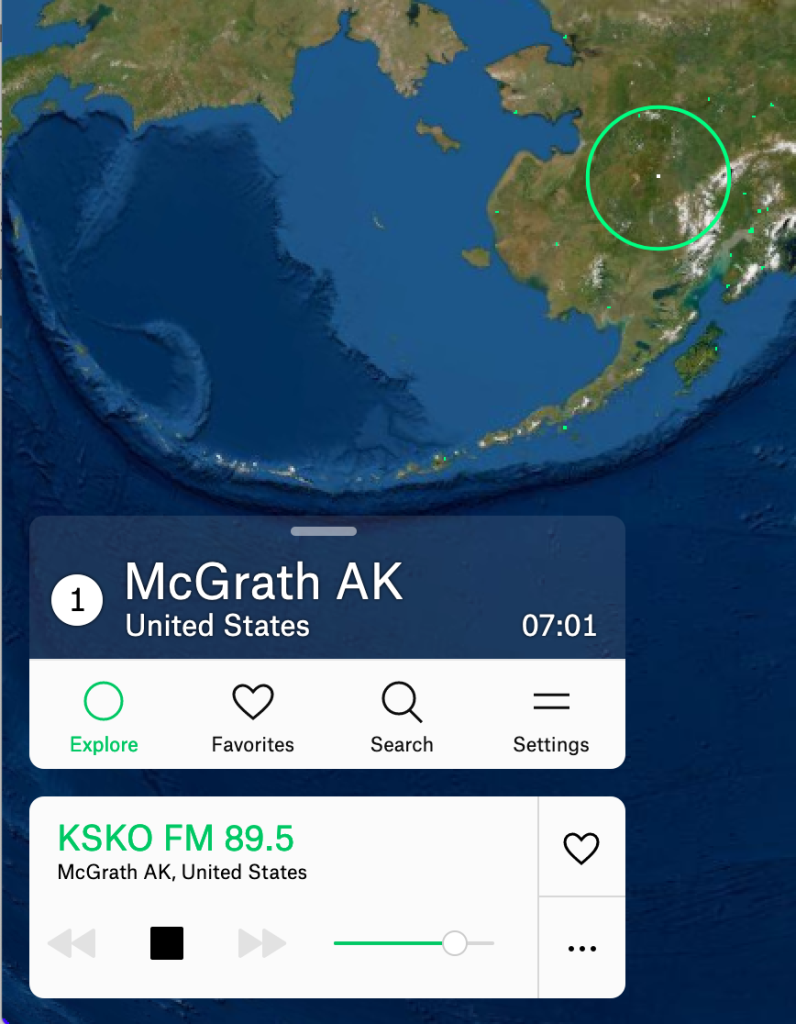
Originally posted at doc.blog on 11/17/2019
In response to posted news (shared on Facebook’s I Love AM Radio group) that KIDD-AM 630 and KNRY-AM, both in Monterey, CA, were donated by radio legend Saul Levine to a religious broadcasting group, I said,
When AM radio finally dies (not a knock: all things do), its last living cells will be religious broadcasters (also not a knock: just an observation).
To which another person there replied,
Doc, there will be more than just religious broadcasters. Here in SoCal there’s Spanish (a lot), Chinese (on a 77kw Mexican signal), Sports (3 from L.A., 1 in San Diego now), a couple of music stations (one is playing “Adult Hits” out of Texas on a 50k signal) – There’s Middle Eastern radio, and more. The trouble here is in the numbers. Can you imagine how it would be if there were 10+ stations playing the same music? That’s kinda like how it is here. What we used to call “broadcasting” on AM is turning into “narrowcasting” – driving more and more people away. There are at least 15 ethnic stations, 2 News-Talkers and one all news station covering more than 15 million people. Not a knock either. It’s reality..a sad reality!
And to that I replied,
Here in Santa Barbara, with a salt water path bringing coastal AMs (all the way to Rosarita, NL) in like locals (and tropo doing the same for FMs much of the time), it’s clear that both bands, in different ways, are turning into narrowcasts: religion, ethnic groups, sports, partisan political talk. The list goes on. The one conditional exception is public radio, which tries hard to hold a political center it can’t have because, except for the local stuff, it’s based in Washington, where policy, governance and academic specialties are the lenses through which everything in the world appears.
I think the reason SiriusXM succeeds is that it offers a much wider range of channels programming on its “dial” than anything anywhere in terrestrial radio. It also has the good fortune to have stayed alive and thriving in an economy that is moving economically from a free basis to a subscription one.
What SiriusXM can’t (or doesn’t) offer yet is what will keep terrestrial radio alive: exactly what you’re talking about—ethnic,sports and other forms of narrowcasting.
The big challenge for all of it will be getting future devices to hunt from one “band” to another: over-the-air, satellite and streaming over the Internet. This is do-able, but in the long run only if the whole combined system is digital.
This is why I have some hope for full-digital AM radio. The open question is whether the gear-makers (especially for cars) will be willing to do the work. I suspect they won’t, especially if the transmission and reception ends require costly proprietary encoding and decoding, and just one source of parts. This, more than anything else, is what’s killing HD Radio. (Forget the actual engineering details. What matters is that HD Radio is a market captive to Ibiquity. Unless I have that wrong. And tell me if I do.)
Just thought I’d share that. If the thread grows, I’ll add to it here.
Tags: Uncategorized

I’m reviving this blog to see what happens.
If readers are interested I’ll see if any of the other writers (including the readers who write in) are interested in re-joining. Or, if we want to move it elsewhere. Or something. Not sure. Ideas welcome. If you have some, write me at my first name at my last name dot come. Thanks!
Tags: History · Industry

To answer the question Where are SiriusXM radio stations broadcasted from?, I replied,
If you’re wondering where they transmit from, it’s a mix.
SiriusXM transmits primarily from a number of satellites placed in geostationary orbit, 35,786 kilometres or 22,236 miles above the equator. From Earth they appear to be stationary. Two of the XM satellites, for example, are at 82° and 115° West. That’s roughly aligned with Cincinnati and Las Vegas, though the satellites are actually directly above points along the equator in the Pacific Ocean. To appear stationary in the sky, they must travel in orbit around the Earth at speeds that look like this:
- 3.07 kilometres or 1.91 miles per second
- 110,52 kilometres or 6,876 miles per hour
- 265,248 kilometres or 165,025 miles per day
Earlier Sirius satellites flew long elliptical geosynchronous orbits on the “tundra“ model, taking turns diving low across North America and out into space again.
Satellites are also supplemented by ground repeaters. If you are in or near a site with repeaters, your Sirius or XM radio may be tuned to either or both a transmitter in space or one on the ground nearby. See DogstarRadio.com’s Satellite and Repeater Map to see if there is one near you.
In addition, SiriusXM also streams over the Internet. You can subscribe to radio, streaming or both.
As for studios, those are in central corporate locations; but these days, thanks to COVID-19, many shows are produced at hosts’ homes. Such is the case, for example, with SiriusXM’s popular Howard Stern show.
So, to sum up, you might say SiriusXM’s channels and shows are broadcast from everywhere.
I should add that I’ve been a SiriusXM subscriber almost from the start (with Sirius), and have owned two Sirius radios. The last one I used only once, in August of 2017, when my son and I drove a rental minivan from Santa Barbara to Love Ranch in central Wyoming to watch the solar eclipse. After that it went into a box. I still listen a lot to SiriusXM, almost entirely on the phone app. The rest of my listening is over the Web, logged in through a browser.
Item: a few days ago I discovered that a large bill from SiriusXM was due to a subscription for both the radio and the Internet stream. So I called in and canceled the radio. The subscription got a lot cheaper.
I bring this up because I think SiriusXM is an interesting one-company example of a transition going on within the infrastructure of what we used to call radio and would instead call streaming if we started from scratch today.
In The Intention Economy (Harvard Business Review Press, 2012), I saw this future for what we wouldn’t call television if we were starting from scratch today (or even when this was published, eight years ago):

Today we’d put Netflix, Amazon Prime, YouTube TV and Apple TV in the upper left (along with legacy premium cable staples, such as HBO and Showtime). We’d put PBS stations there too, since those became subscription services after the digital transition in 2008 and subsequent spectrum sales, which reduced over-the-air TV to a way for stations to maintain their must-carry status on cable systems. (Multiple “repacks” of TV stations on new non-auctioned spectra have required frequent “re-scans” of signals on TVs of people who have antennas and still want to watch TV the old-fashioned way.)
Over-the-air radio is slower to die, but the sad fact is that it has been terminal for years. Here’s the diagnosis I published in 2016. I’ve also been keeping a photographic chronicle of radio in hospice, over on my Flickr account for Infrastructure. A touching example of one station’s demise is Abandoned America’s post on the forgotten but (then) still extant studios of WFBR (1924-1990) in Baltimore.
Like so much else, over-the-air radio is being subsumed into Internet streams and podcasts (in the two Free quadrants above).
Want to have some fun? Go to RadioGarden and look around the globe at streams from everywhere. My own current fave is little CJUC in Whitehorse, Yukon. (I list many others from earlier explorations here.) All of those are what we call “on” the Internet. But where is that?
We can pinpoint sources, as RadioGarden does, on a globe, but the Internet defies prepositions, because there is no “there” there. There is only here, where we are now, in this non-place, a functionally vast but geographically absent non-place: a giant zero with no distance and no gravity because its nature is to defy both. I’m in Santa Barbara right now, but could be anywhere. So could you.
On the Internet, over-the-air TV and radio are anachronisms, though charming ones. Like right now, as I’m listening to Capricorn FM from Polokwane, South Africa. (“Crazy up-tempo hip-hop” is the fare.) But I’m not listening on a radio, which would need to tune in 89.9fm, within range of the transmitter there. I’m here, on (or in, or through, or pick-your-preposition) the Internet.
Or consider the case of KSKO/89.5 in McGrath, Alaska, population 319. Here’s how it looks on Radio.Garden:

Geographically, McGrath elongates the meaning of “isolated.” No roads lead there from elsewhere. Visitors come and go to other parts of the world by plane, dogsled, or boat during months when the Kuskokwim River isn’t frozen. (The name is derived from the Yup’ik words for “big slow moving thing.”) In Coming Into the Country, the best book ever written about Alaska, John McPhee says “If anyone could figure out how to steal Italy, Alaska would be the place to hid it.” Power-wise, KSKO is just 90 watts, with an antenna on a pole beside the station. Since the population of McGrath is just 319, and nearly all are within shouting distance of each other, it doesn’t need to be bigger.
What matters, however, is that I’m listening to KSKO right now in Santa Barbara. (Before that I was digging the equally community-involved KIYU in Galena, 130 miles away, where the station a few minutes ago reported a temperature of -30°f. With “freezing icy fog” coming, a high of -15°f and a low tonight of -40°f. Fun.)
A few years ago my teenage son asked me what the point of “range” and “coverage” was for radio stations. Why, he wondered, was it a feature rather than a bug that radio stations’ signals faded away as you drove out of town? His frame of reference, of course, was the Internet. Not the terrestrial world where distance and the inverse square law apply.
Of course, we’ll always live in the terrestrial world. The Internet may go away, or get fractured into regions so telecom companies can bill for crossing borders and not just for use, or so governments can limit what can happen in their regions (as we already have in some countries, most notably China). But the Internet is also an infrastructural genie that is not going back in the bottle. And it is granting many wishes, all in a new here.
Tags: Geography · History · Media · Radio · Television
 In Reason Paul Detrick asks if Facebook a public utility and gets an answer of “yes” from filmmaker Cullen Hoback. “At this point I would say that Facebook is basically a public utility,” he says. “You’ve got over a billion people using this service. That’s not a choice for many people. Certainly not for a lot of teenagers. It’s kind of social suicide to not be a part of that.”
In Reason Paul Detrick asks if Facebook a public utility and gets an answer of “yes” from filmmaker Cullen Hoback. “At this point I would say that Facebook is basically a public utility,” he says. “You’ve got over a billion people using this service. That’s not a choice for many people. Certainly not for a lot of teenagers. It’s kind of social suicide to not be a part of that.”
Release of Cullen’s new documentary Terms and Conditions May Apply is the occasion for the interview with Paul. I saw the movie recently here in New York and highly recommend it. I also agree with Cullen that Facebook’s popularity is utility-grade in its popularity.
While facebook has utility for many people, does that fact make it a public utility?
What makes a utility public — in the technical, administrative and legal senses of that word — are local, state and federal agencies with professionals in position to know what’s going on inside the providers of necessary services that sustain civilization.
At the state level in the U.S., utilities are overseen by PUCs — public utility commissions. As the graphic above (from the Pennsylvania PUC) shows, there are basically five kinds of public utilities recognized today by PUCs: transportation, electricity, natural gas, telecommunications and water/wastewater. (Wikipedia’s list of utilities also includes steam, which is usually a byproduct of electric power production. It also covers many nations other than the U.S.) So, by that definition, Facebook isn’t a public utility, even in the telecom sense, because it isn’t a phone or cable company.
But it is important to also note that PUCs’ comprehension of the industries they regulate often drags behind the times. We see that with the dated cell phone image above, and in the Wisconsin PUC’s image of a touch-tone landline phone. Still, there are at PUCs people that at least they know something about what’s happening inside the utilities they oversee. The problem with giant Web services — especially Google and Facebook — from a PUC perspective, is that nobody outside those companies knows what’s happening, exactly, inside them.
Perhaps with the specter of future PUC oversight in the future, Google has recently been forthcoming about its vast data centers, inviting visitors to “see where the Internet lives”. (An overstatement, but less extreme than it ought to be.) Like many big companies in need of PR coverage, they brag about their public-minded compliance with the letters and spirits of regulatory interests. Thus they brag,
Environmental, health, and safety
Certifying our high standards:
Google is the first major internet services company to gain external certification of our high environmental and workplace safety standards throughout our US and European data centers. More specifically, all of our US and European data centers have received voluntary ISO 14001 and OHSAS 18001 certifications. Additionally, we’re the first company in the United States to obtain multi-site ISO 50001 Energy Management System certification, covering 6 US data centers.
Our environmental, health, and safety policy:
Google owned and operated data centers will lead the industry in environmental protection, pollution prevention, health, and safety. We will take a proactive approach in our activities and aim to continually improve data center environmental, health, and safety (EHS) performance. We will comply with applicable EHS legal requirements, and as appropriate for other EHS matters, we will implement voluntary standards or best management practices.
Yet the infrastructural graces Google provides (e.g. search, mapping, traffic) are not visible in those policies or photos of data center racks and plumbing. For what these things actually do, those data centers are boxes no less black than the NSA’s.
So now let’s say we actually do want Facebook and Google regulated to the same degrees as, say, transportation, power and water companies. We would expect government experts to make sure these companies are serving the public well, right? Especially, say, around issues the public cares about, such as personal privacy, which has been a big issue lately — and the bulls-eye of Cullen’s documentaries. (His next is Track Off Us.)
But we don’t have that. Not even close. Instead we have governments enlisting the help of these companies (and ones in telecom) for spying on citizens. It’s an unpleasant irony.
There are no easy solutions here; just an urgency toward reversing twin trends toward opacity and impunity by the Googles and Facebooks of the world, and by the government bodies taking advantage of them.
[Later…] Find some additional conversation with @CullenHoback here on twitter.
Tags: Industry
 If Hurricane Sandy lives up to expectations, it will be the biggest storm to hit the Northeast in recent history, if not in all of it. With attention to infrastructure, I’m listing infrastructure-grade information sources here, and following the stories over at Riding out the storm, on my personal blog.
If Hurricane Sandy lives up to expectations, it will be the biggest storm to hit the Northeast in recent history, if not in all of it. With attention to infrastructure, I’m listing infrastructure-grade information sources here, and following the stories over at Riding out the storm, on my personal blog.
Web links:
TV and Radio (going southwest to northeast):
Newspapers:
Tags: Emergency · Media · Radio · Roads/Bridges · Weather
I first heard “sustainable consumption” when John Wilbanks uttered it yesterday. At first I thought he was joking about his work around large international well-meaning entities such as the World Economic Forum. By that I mean, large economies with large industries wishing to keep consumption by served populations up to economy-sustaining levels. It was later that I looked it up and found at Wikipedia that a definition dates back to the Oslo Symposium on Sustainable Consumption, which called it,
the use of services and related products which respond to basic needs and bring a better quality of life while minimising the use of natural resources and toxic materials as well as emissions of waste and pollutants over the life cycle of the service or product so as not to jeopardise the needs of future generations.”
So my assumed definition was at odds with the Oslo one, and others raised since. I therefore sit corrected, but wish to retain the ironies around the topic.
And, since nobody had blogged anything here in a long time and I’d like to fire the blog up again, I thought I’d flag the whole topic, since in the long run it is bound to bear on infrastructure.
Not speaking of which, a service called Zemanta, which works as a plug-in with WordPress, suggests these as related bonus links:
Tags: Industry · Sustainability
Check out Cable Blues: Tangled & Crazy Wiring, Part 6 at Dark Roasted Blend. You have to scroll down a bit before the pix show up, but they’re all pretty amazing. Many of the subjects are a triumph of infra over structure.
Tags: Fun · Photography
“Therefore, we’re going to dig conduit directly through the Earth’s Crust from the sub-basement of 60 Hudson in NYC all the way to 350 East Cermak in Chicago,” says “a purported representative of DeepBore Networks” to Rob Powell of Telecom Ramblings.
A ruse, of course. But it suggests some fun thinking about infrastructure.
Tags: Fun
For anybody interested in the history of infrastructure, and lessons to be learned from many points in the history of the Industrial Age, Andrew Odlyzko, of the University of Minnesota, is required reading.
Here is a reading list.
Note the pieces on railway mania. Highly relevant stuff.
I’m writing this right now while leveraging one of the older forms of Industrial Age transport: canals. We are currently on one in Lorraine, France. Built in the early 1800s, it remains in use occasionally for barges, but is better known now for leisure boating. That’s what we’re doing here. It’s a small but thriving industry.
Tags: History · Industry
 A few months back, partly in anticipation of this blog, I created a Flickr account for the Berkman Center‘s Infrastructure group. To my surprise, no account with the name “Infrastructure” was taken, so I grabbed it, and the site is now here: http://www.flickr.com/photos/infrastructure/
A few months back, partly in anticipation of this blog, I created a Flickr account for the Berkman Center‘s Infrastructure group. To my surprise, no account with the name “Infrastructure” was taken, so I grabbed it, and the site is now here: http://www.flickr.com/photos/infrastructure/
All the photo sets so far are mine, but I trust many more will come from other folks in our group. Here’s a rundown on what’s there now:
- Shots exploring Domodossolla, Italy, during a day trip from our family’s ski vacation this past winter in Zermatt, Switzerland. The trip was recommended by Urs Gasser, Executive Director of the Berkman Center.
- The rapidly-changing spire atop the Empire State Building, on a day pilots call “severe clear.” It is interesting to see how much electronic stuff has encrusted the blunt winged art deco made familiar by King Kong, and how much of that same stuff has been replaced many times over the years. Much of what’s still there is obsolete analog VHF TV transmitting antennae, that I expect will come down. What I’d like to see, personally, is the old building restored to something close to its original shape. Since most transmissions are now on much shorter wavelengths, using smaller antennas, this should be do-able.
- Fiberfete, a “celebration of our connected future,” in Lafayette, Louisiana. Lafayette is the first city in the country, I believe, to have a municipal fiber optic network that passes every home in town (more than 100,000 people live there), and can deliver 100Mbps service within the town. That’s interesting infrastructure right there. What should be done with it? That was a focus of the gathering.
- Tracking flights. For most of the history of aviation, following airplanes in and out of airports electronically — watching weather alongo the way — was a privilege only of a few professionals. Now it’s something anybody can do, with the help of services such as FlightAware. Here I tracked my 13-year-old son on his first solo passenger flights coast-to coast, all in one weekend.
Infrastructure sets with other Flickr accounts include:
As a bonus link, here’s the Infrastructure Photo Pool at Flickr.
Tags: Photography · Television






 In
In 
